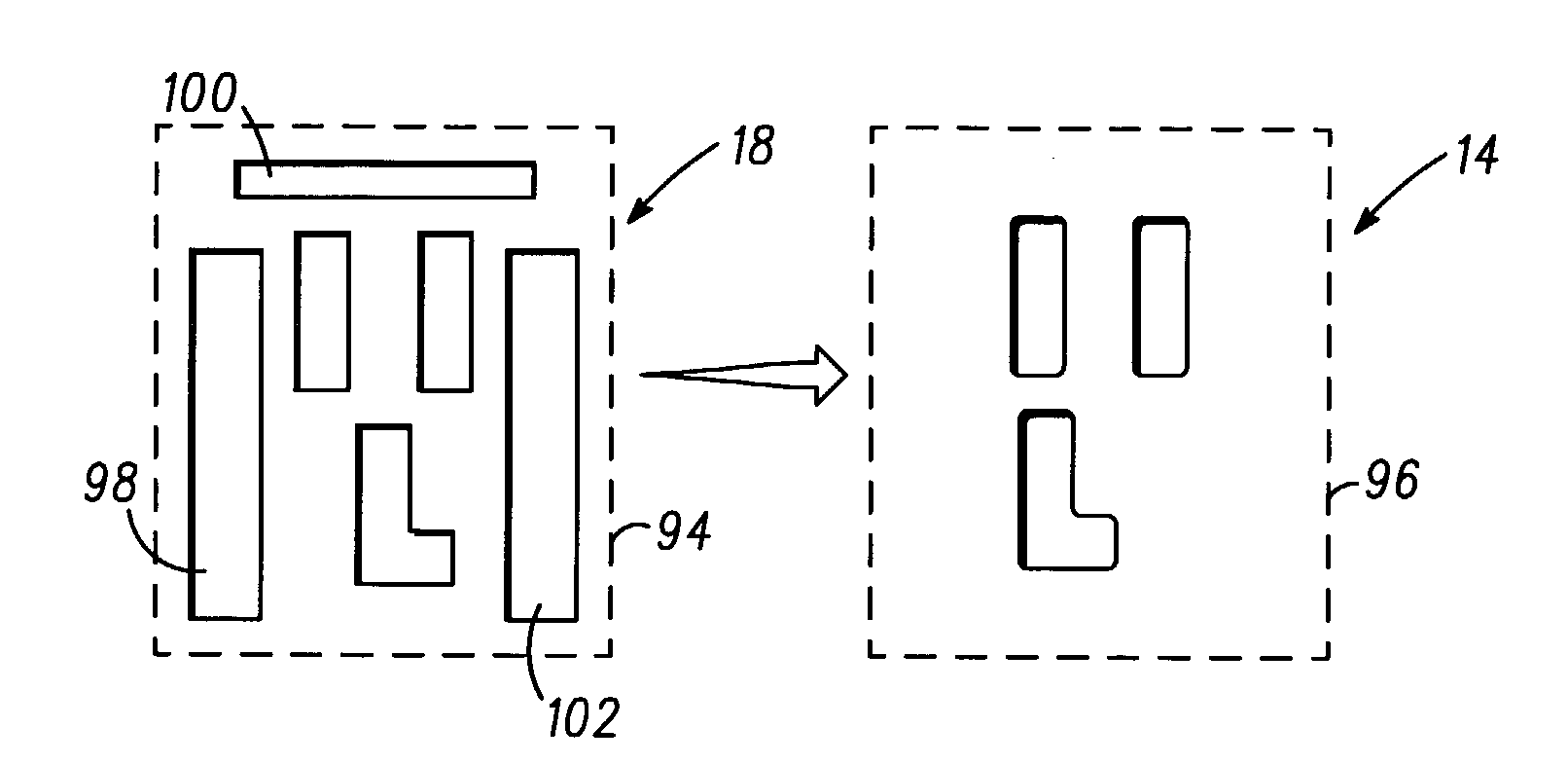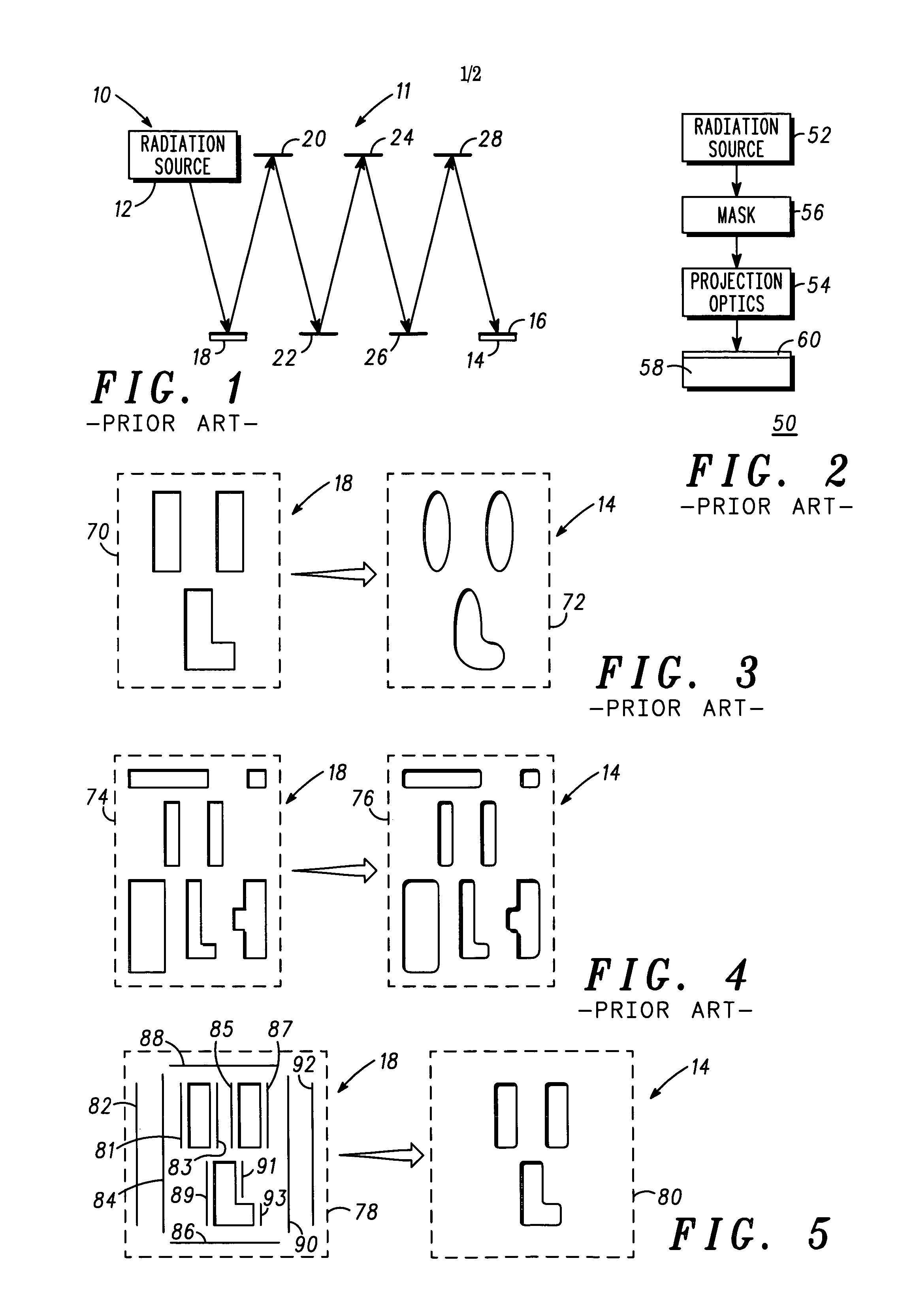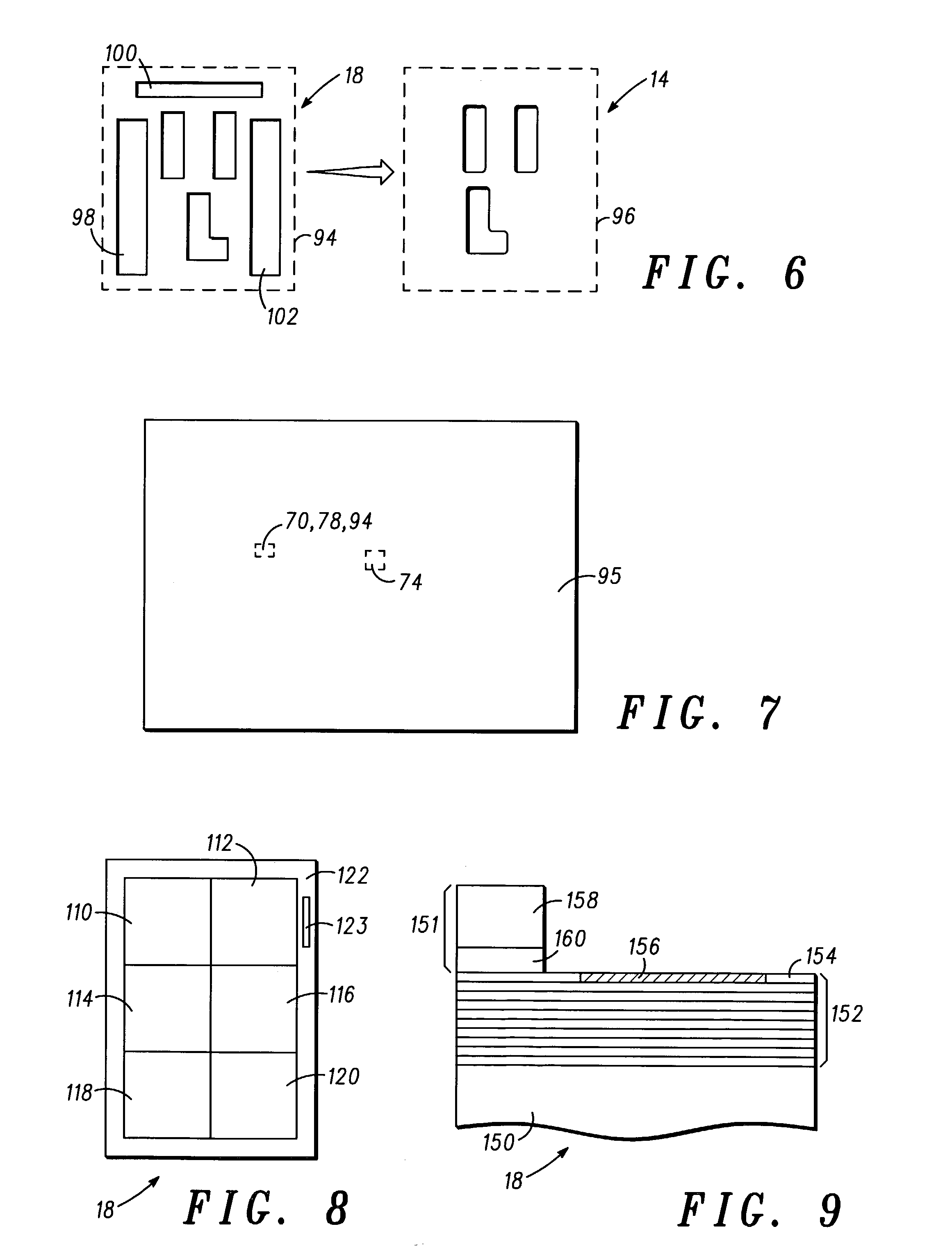Non-resolving mask tiling method for flare reduction
a non-resolving, mask technology, applied in the field of semiconductor circuits, can solve the problems of scattering bars not providing improvement for medium or long-range pattern density or flare distortion, mask or reticle variation,
- Summary
- Abstract
- Description
- Claims
- Application Information
AI Technical Summary
Benefits of technology
Problems solved by technology
Method used
Image
Examples
Embodiment Construction
[0018]FIG. 1 illustrates an EUV lithography system or optical system 10 with an optical portion 11. Optical system 10 has a radiation source 12, a reflecting reticle or reflecting mask 18, and optical reflecting elements 20, 22, 24, 26 and 28. In one form, the optical reflecting elements 20, 22, 24, 26 and 28 are implemented with multiple layer mirrors. The radiation source 12 may be implemented in various forms such as a laser, a laser produced plasma, a gas discharge source or an electron beam source. In the illustrated form, light produced by the radiation source 12 is transferred from the radiation source 12 to the reflecting mask 18. A predetermined pattern exists on the reflecting mask 18. Portions of the predetermined pattern cause the radiation or light to reflect via the reflective mask by reflecting from reflecting mask 18 to an optical reflecting element 20. In sequential fashion the light is further reflected to optical reflecting elements 22, 24, 26 and 28. From optical...
PUM
| Property | Measurement | Unit |
|---|---|---|
| wavelength | aaaaa | aaaaa |
| length | aaaaa | aaaaa |
| width | aaaaa | aaaaa |
Abstract
Description
Claims
Application Information
 Login to View More
Login to View More - R&D
- Intellectual Property
- Life Sciences
- Materials
- Tech Scout
- Unparalleled Data Quality
- Higher Quality Content
- 60% Fewer Hallucinations
Browse by: Latest US Patents, China's latest patents, Technical Efficacy Thesaurus, Application Domain, Technology Topic, Popular Technical Reports.
© 2025 PatSnap. All rights reserved.Legal|Privacy policy|Modern Slavery Act Transparency Statement|Sitemap|About US| Contact US: help@patsnap.com



